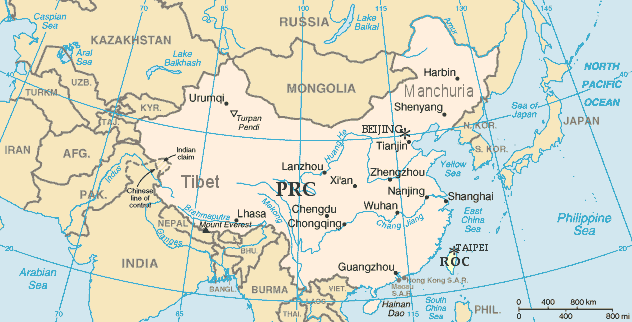Creativity
Is China Creating Brilliant Yet Damaged Future Leaders?
Are China’s boarding schools damaging children of the elite and migrant workers?
Posted April 5, 2016

In the summer of 2002 I went with a group of Fulbright psychologists and educators to visit China’s educational and mental health institutions. Among the most amazing experiences were our visits to a few private boarding schools (both urban and geographically isolated) for children from families of the political and economic elite.
At these schools, we were impressed by the exceptionally high academic level, and by the way up-to-date educational research was implemented--without getting entangled in boards of education bureaucracies that are the bane of American academicians. The children were programmed throughout a long school day with instruction in a wide range of subject matter, but also with activities aimed at fostering physical development (e.g., we saw young children roller blading) and creativity. Perhaps in response to criticism of Chinese conformity, we saw deliberate efforts to foster creativity—for example, by asking children to solve mathematical problems in several different ways. Of course, creativity is, by its nature, subversive of the status quo (witness Ai Weiwei), so some of us were privately skeptical as to whether creativity was the kind of skill that could be taught Tuesdays and Thursdays from 10 to 11am.
At the same time, we were shocked to learn that children as young as three years old could be abandoned by their parents to an impersonal (if well-intentioned, efficient, and expensive) institution. Then I remembered hearing that children are, in Chinese, referred to as “one-year-old” at birth—so I asked, and verified, that the boarding schools enrolled children as young as two! This is extremely early in children’s brain, language, social, and emotional development. They may only speak a few dozen to a few hundred words and be beginning to put together two- or three-word sentences.
A few members of our group commented privately that, in the United States, such abandonment would be considered child abuse. At one school I asked whether, if the parents lived nearby, the children could return home on weekends. The answer was, “only if they want to.” Presumably, some children were so angry at their parents that they wanted no contact with them.
At one meeting, a Chinese psychiatrist referred to Harry Harlow’s classic experiments--that would now be forbidden as violations of animal care guidelines--with infant rhesus monkeys. (The infants clung to terrycloth “mothers” for the comfort provided by contact even though nearby wire “mothers” provided them with milk. Infants with only wire mothers showed more abnormal behaviors at the time, but all the monkeys grew up to be abnormal.) She wondered aloud whether such early residential schooling was preventing children from developing normal attachment, and, by implication, whether they would suffer irreversible emotional damage.
We heard stories (it is hard to know what to make of them, since individual instances cannot establish causality) of child suicides, sometimes with the children first killing their parents—presumably including some Party officials. Perhaps as a result, we learned that there was increased funding for school psychologists. And what was the role of the school psychologist? To communicate an understanding of the children’s feelings, and explain to them that their parents, often at great personal expense and self-sacrifice, wanted them to have the best possible education, and that this showed how much they loved them. Communicating the children’s sense of abandonment to the parents and seeking ways to increase rewarding contact with them was not part of the picture; rather, counseling was aimed at getting the children to accept and make the best of their situation as one they could do nothing to change.
(One consequence of the one-child policy has been to invert the family hierarchy, with adults spoiling—or fearing they might spoil—children as “little emperors” ruling over two parents and four grandparents. Unfortunately, packing two year olds off to elite boarding schools is a cure that is worse than the disease.)
The children and adolescents who are products of this unprecedented educational experiment are now in high school and college; and some are already young adults. They will be overrepresented in the next generation of China’s political and economic leadership. Who knows what the future will bring?
***
From what I could learn on the internet (with all the caveats about such information) residential schooling has become even more widespread since my visit, though it would also appear that there have been a number of changes. First, boarding schools, often of questionable quality or worse, are being used as a default solution for their children by large numbers of migrant workers who leave the countryside to earn a living in big cities. Second, many in the political and economic elite are now sending their children to boarding schools in other countries, where they believe the education to be superior. And third, it appears that word from experts of the psychological dangers to very young children has entered into the discussion. So it is possible that the age at which children of the elite are first sent to boarding schools may be rising. From a mental health perspective, while children are quite variable in their vulnerability, as a general rule, the older the children, the less the risk of severe psychological damage.
Children, at least many of them, can be surprisingly resilient. Perhaps the most emotionally damaged ones won’t be capable of making it to China’s ruling echelons. The sadism in elite British boarding schools is legendary (though the schools traditionally accepted seven-year-olds, not two-year-olds) and the children who survived managed to rule much of the world. Perhaps things will turn out well for China too.
But we—and policy makers around the world--need to consider the possibility that China’s educational experiment may not turn out well. At the bottom of the political and economic hierarchy there is the potential for widespread psychological problems and social dysfunction among the children of internal migrants. And at the top, the country may be on the verge of producing a generation of brilliant but crazy leaders.
Image Source:
Wikimedia Commons: Map of China
https://commons.wikimedia.org/wiki/File:Map_of_China.png
Check out my most recent book, The Myth of Race, which debunks common misconceptions, as well as my other books at http://amazon.com/Jefferson-M.-Fish/e/B001H6NFUI
The Myth of Race is available on Amazon http://amzn.to/10ykaRU and Barnes & Noble http://bit.ly/XPbB6E
Friend/Like me on Facebook: http://www.facebook.com/JeffersonFishAuthor
Follow me on Twitter: www.twitter.com/@jeffersonfish
Visit my website: www.jeffersonfish.com




